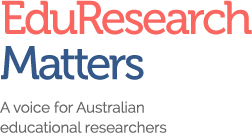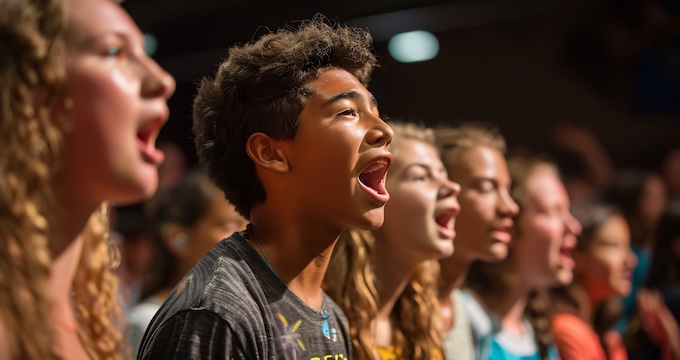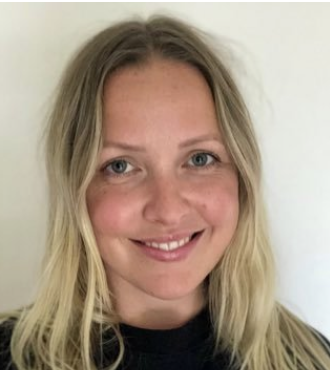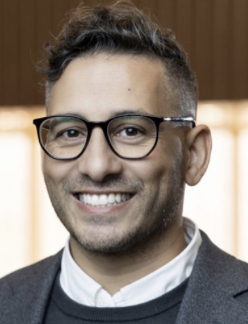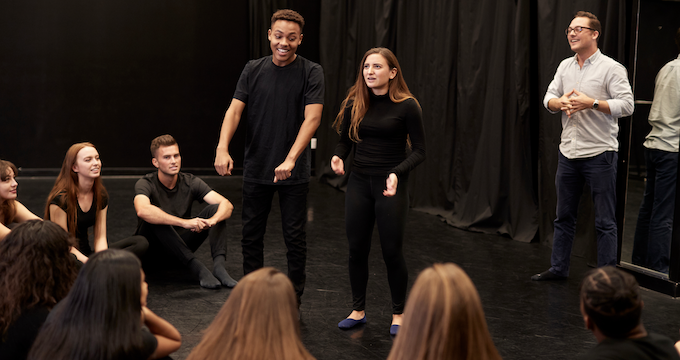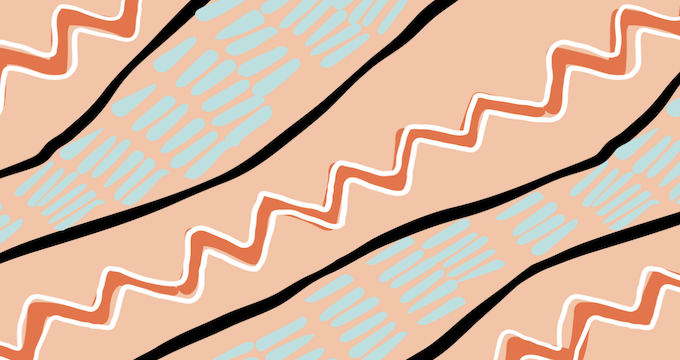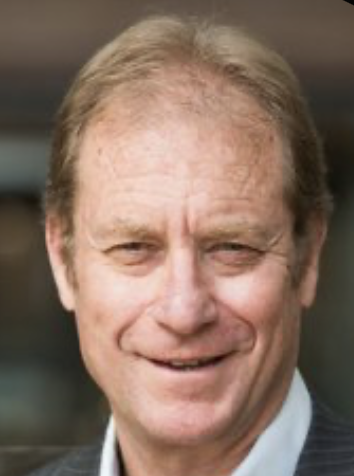Simmi is enrolled in the Postgraduate Course in Early Childhood Teaching course at Swinburne University of Technology. She is concerned about her need for more knowledge about interacting and working closely with young children, especially as an international pre-service teacher starting her first placement in Australia. She has learned about Mursion, a virtual reality (VR) simulation tool utilised in her course to address this. This technology aims to help international students navigate the cultural differences and classroom dynamics in Australian early childhood settings.
Research shows one in five of 1,200 surveyed individuals working in Early Childhood Education and Care (ECEC) intended to leave their workplaces within 12 months. With the increasing diversity in Australian education and the current teacher workforce shortage, finding new ways to prepare international students for the early childhood setting is necessary. Virtual Reality (VR) revolutionises Initial Teacher Education (ITE) by providing international pre-service teachers with immersive experiences in early childhood education. Integrating VR technologies can better prepare pre-service teachers for working with young children.
Realistic scenarios
Such a program enables Simmi to become immersed in realistic early childhood scenarios using virtual reality. It allows her to practice managing and engaging with diverse children’s avatars in a risk-free environment. Integrating VR into ITE can benefit international students by providing immersive, reflective, and culturally responsive experiences. This, in turn, can enhance adaptability, improve teaching methods. It also bridges the gap between theoretical knowledge and practical application for pre-service teachers in the Australian early childhood context.
Education is no stranger to transformation in an era of rapidly advancing technology. But how does this technological shift impact future teachers, especially in Early Childhood Education (ECE)? At Swinburne University, we explore this through Mursion, a VR simulation platform integrated into Initial Teacher Education (ITE) programs.
Why this particular platform?
VR is already common in fields like aviation, medicine, and military simulation and training. Its use in teacher education is relatively new. The Mursion platform generates a virtual world, typically a multi-user, computer-based environment enabling users to interact through pre-programmed avatars. Other Australian universities have utilised Mursion to enhance their courses, including teacher education. But Swinburne is unique through its application to the early childhood context. Through the Mursion platform, pre-service teachers engage in “situational simulations” that authentically replicate genuine early childhood environments. It enables them to have interpersonal interactions with live avatars. This level of realism is valuable for developing crucial teaching skills and strategies before encountering real-world classroom challenges.
These simulations are particularly advantageous for pre-service teachers, especially international students. It allows them to familiarise themselves with the context of Australian early childhood education. What sets Swinburne apart is our tailored approach to integrating Mursion specifically for early childhood educators. But why does this matter? Early childhood educators have a profound impact on children’s development and learning. We prepare them to navigate the complexities of real-world EC settings by equipping them with practical skills through immersive VR.
Australian Initial Teacher Education (ITE) providers face the critical task of ensuring that pre-service teachers meet the Graduate career stage of the Australian Professional Standards for Teachers. This includes the essential ability to manage classroom situations effectively. While practical placements are indispensable for developing these teaching skills, they demand significant resources and time. Recognising these challenges, ITE providers are exploring innovative approaches like Virtual Reality (VR) to complement traditional placements.
Virtual reality gaining traction
VR-based simulations are gaining traction across Australian universities. They offer immersive and interactive learning experiences that support the development of teaching competencies. VR improves in several key areas.
- These simulations provide a safe and controlled environment where pre-service teachers can practice and refine their skills without the pressures of a real classroom. For instance, the University of Newcastle has implemented a suite of VR technologies. That allows pre-service teachers to engage in realistic teaching scenarios and receive immediate feedback.
- These simulations increase student motivation, improve collaboration and knowledge construction and enhance classroom practices
- Enable students to revisit and review lessons as often as needed to solidify their grasp of key concepts.
- Additionally, minimising feelings of unease and self-consciousness that might otherwise hinder students from fully engaging in activities like role-playing.
Bridges a connection
Unlike other virtual simulations like SimSchool, Mursion’s Human-in-the-Loop interaction model stands out. In this model, live actors control avatars, offering realistic and responsive classroom scenarios for pre-service teachers. These actors can observe pre-service teachers via webcams and dynamically respond to their speech and body language. That creates an interactive and responsive simulation environment. It bridges a connection between Artificial intelligence (AI) and the human world. We firmly believe this human element is essential for creating authentic, culturally responsive simulations. It’s particularly true for international students who need to understand the nuances of the Australian education system. At Swinburne, we’ve found Mursion’s interactive platform uniquely caters to our students’ diverse needs. It provides them with the practice they need before stepping into a real classroom. Therefore, our research aims are
- Explore the transformative power of immersive VR Mursion in boosting the self-efficacy of international students.
- Uncover the profound impact of immersive VR Mursion on enhancing international students’ cultural understanding within the Australian educational landscape.
- Pioneer a sustainable ECEC system on a global scale, empowering international students to apply their cultural insights in diverse educational environments.
- Empower pre-service teachers to hone their pedagogical and classroom management skills, enriching their teaching journey.
- Craft a secure simulated environment for refining teaching approaches that transcend cultural-educational boundaries.
Supporting early childhood educators
The field of Early Childhood Education (ECE) presents significant challenges. To excel in this field, early childhood teachers must possess foundational teaching skills and the ability to effectively manage the developmental needs of young children, navigate family dynamics, and create inclusive learning environments. Mursion VR simulations are designed to address these challenges, providing pre-service teachers with a platform to engage in lifelike interactions that mirror real-world EC settings.
During their practical placement, pre-service teachers in the EC field may encounter a variety of demanding scenarios. These could range from supporting a child showing signs of emotional distress to engaging in difficult conversations with parents or implementing early intervention strategies for children with learning differences. By immersing themselves in these scenarios using Mursion, pre-service teachers can cultivate the professional skills, confidence, and cultural competence necessary to overcome these challenges.
Providing a place to practise using virtual reality
In our Postgraduate Course in Early Childhood Teaching course, most students come from diverse educational backgrounds and hold bachelor’s qualifications. As part of the course, they engage in interactive sessions using Mursion to practice and refine their interactions with children, preparing them for the intricacies of the EC environment and the art of conversing with young children. For instance, within the Mursion environment, students find themselves in a typical early childhood setting, surrounded by avatars of children engaged in conversations, mirroring the real-life dynamics of an Australian early childhood setting during group time. Refer to Figure 1 for a visual representation of this immersive experience.
Figure 1: Using the Mursion in Postgraduate Course in Early Childhood Teaching Class at Swinburne
A year of success in early childhood teaching
Swinburne University’s Postgraduate Course in Early Childhood Teaching course has used Mursion successfully for over a year. The course was developed to prepare an international student cohort, and Mursion was implemented as a placement preparation tool before entering early childhood settings. Mursion allows our students to practice challenging scenarios—like managing classroom behaviour or adapting to cultural differences—without the high stakes of a real classroom. Aligned with Swinburne’s broader strategic goals, Mursion’s role in the course has been crucial in adapting teacher education to a rapidly evolving, tech-driven landscape. Positive student feedback embraced the simulation technology, which helped pre-service teachers build essential skills, particularly in classroom management and teacher identity. This enabled academic staff to continue its utilisation alongside traditional placements when students could return to classroom settings.
Overcoming initial reservations
Of course, there were concerns. Could virtual simulations substitute face-to-face teaching practice? Would pre-service teachers engage meaningfully with virtual avatars? As we reflect on a year of student feedback, the answer is clear: yes. Mursion has exceeded our expectations by providing a “risk-free space” where students can make mistakes, reflect on their experiences, and improve their teaching strategies.
To ensure the simulated lessons remain practical, we’ve aligned them with the Early Years Learning Framework (EYLF) and National Quality Standard (NQS). This alignment makes the experience immersive and deeply relevant to the real-world standards our students will face in their placements.
Enhancing student learning through virtual reality
The primary goal of using Mursion is to enhance learning outcomes. How? By bridging the gap between theoretical knowledge and its application. Pre-service teachers can experiment with lesson delivery, refine classroom management strategies, and receive immediate feedback while engaging in a safe, controlled environment. The simulations enable students to gain confidence, especially in situations they might find intimidating or unfamiliar.
For instance, students reflect on their VR experiences using platforms like Padlet, sharing how simulations have helped them better understand classroom dynamics. These reflections provide valuable insights into how Mursion has impacted their learning. They are then unpacked in class debriefing discussions, where tutors and students work together to address challenges and refine their teaching techniques.
Constructive feedback
We have received positive and constructive feedback from students, which is helping the academics to redevelop the Mursion lesson plan. A student said, “We have received positive and constructive feedback from students . . . helping us to redevelop the Mursion lesson plan. The students gave positive feedback about the Mursion and self-reflected on how to improve themselves during interactions with children. One student mentioned, “I learned a lot through this session and how to interact with children and make them comfortable. I enjoyed this. However, it was a bit hard to remember all the children’s names and sometimes hard to hear what they said.”
Some students realised remembering names is important for continuing conversations with children. They devised a solution by quickly writing down the children’s names during the process. This feedback not only gives us a chance to refine the lesson plan. It also allows us to work together to address the challenges and find techniques.
Adapting to a new education system with unfamiliar norms can be challenging. Yet Mursion’s simulations offer a realistic, low-pressure environment where teachers can practice culturally responsive strategies. These simulations reflect the diversity of Australian early childhood education (ECE) settings. It allows pre-service teachers to build confidence in managing real-world situations. We found that the Mursion simulations gave pre-service teachers the practical tools to implement the Early Years Learning Framework (EYLF), enhancing their cultural competence and readiness to support diverse, inclusive, and responsive early childhood environments.
Looking Ahead: The Future of Virtual Reality in Teacher Education
The high attrition rate among early childhood educators in Australia is largely attributed to the demanding nature of working in diverse early childhood environments. Our current research highlights the transformative influence of VR and AI technologies on teacher preparedness, particularly in empowering educators to navigate complex and ever-changing classroom dynamics. Australian initial teacher education (ITE) providers are at the forefront of this innovation, fostering a thriving national community of practice in simulation-based teacher education. Through further advancement and integration of VR and AI technologies, ITE programs can effectively equip future teachers to address the evolving needs of their students and the broader educational landscape. Envisioning a future where VR simulations are seamlessly integrated into teacher training programs across Australia is exciting and essential for advancing education.
One year
As we celebrate one year of Mursion’s successful implementation, it’s clear that this is only the beginning. VR offers immense potential to revolutionise teacher education further, especially as we continue to refine our approach and expand its use. Our aim is to prepare future educators to survive and thrive in culturally diverse, ever-changing teaching and learning environments. By embracing innovative tools like Mursion, we’re ensuring that our pre-service teachers are equipped with the skills, confidence, and cultural awareness they need to succeed in early childhood education.
Mursion is more than just a VR tool—it’s a transformative educational experience that bridges the gap between theory and practice, allowing international pre-service teachers to adapt, learn, and grow.

Jennifer Cutri is a lecturer and researcher at the Department of Education, School of Social Sciences, Media, Film and Education, Swinburne University of Technology. She is the Course Director for the Bachelor of Education Early Childhood Teaching and Bachelor of Education Studies. During her six years in the department, Jennifer has lectured and Unit-Convened various units in the Bachelor of Early Childhood and Primary, Masters of Primary, and Postgraduate Course in Early Childhood Teaching courses.

Anamika Devi brings over 13 years of research, teaching, and industry experience in early childhood education to her role at Swinburne. Prior to joining Swinburne, Anamika served as the lecturer and program director of the Postgraduate Course in Early Childhood at RMIT, where she made a significant contribution to the field of early childhood education. She has been working with a diverse range of teams, including casual staff, workforce, L&T, enrolment, adminstrative, placement, production and marketing teams. She has experience in re-accreditation process, with a particular focus on documentation.

